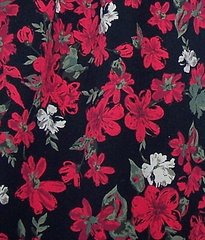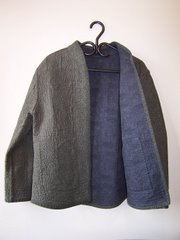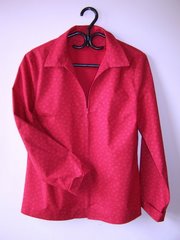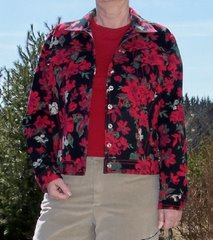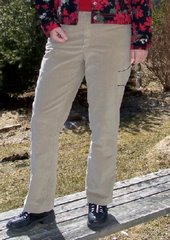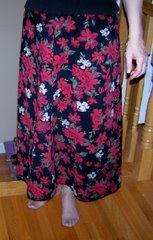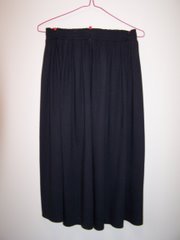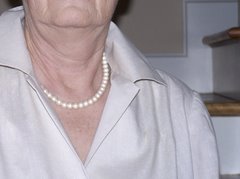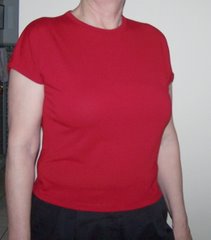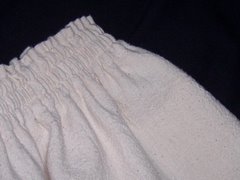 This beautiful fall weather has interfered with my sewing week. I actually got a sunburn sitting on the deck one afternoon. Today it is raining. We had a wild weather night, and one of my carefully piled woodpiles fell totally over in the wind. I guess wood-piling is not my strong suit.
This beautiful fall weather has interfered with my sewing week. I actually got a sunburn sitting on the deck one afternoon. Today it is raining. We had a wild weather night, and one of my carefully piled woodpiles fell totally over in the wind. I guess wood-piling is not my strong suit.T-shirts: Yesterday I managed to finish the two Jalie T-shirts and a skirt that had been waiting for hems. Knits still elude me, and the fit on these Jalie shirts is not perfect. I blogged about these fitting issues earlier.
Knit skirt: The skirt looks ok, but it has a wide (3.5" or more) contoured waistband at the top which I have decided is not flattering on me. The T-shirt stops about an inch above the band, drawing attention to the 'line' created near the hips. Still, it's nice to have a shirt and top that are the same -- a dress in effect.
New Project: Earlier in the week I cut out a 'test pattern' for Simplicity 3789, a princess seamed shirt, the view with the cross over front.

This is my first Simplicity B-C-D pattern. The fabric is from my stash, and is an ivory pashmina-type fabric whose composition I forget -- includes some rayon I think. I washed it, even though it says dry clean only. It's very soft, but seems to cling to itself, and will be a pain to work with as it tends to stretch every which-way. I spent a long time with the pattern making the required adjustments, hoping to turn this into a TNT shirt pattern, as there are several styles in the envelope. Mostly I just want to check the fit.
 Donna Karan Cape: My package from "The Sewing Place" came with the grosgrain I ordered for the Donna Karan cape. The color is not a perfect blend, and I am still on the fence about using it. Originally I thought navy would be best, but then figured it was too much contrast, so I ordered a burgundy color that I hoped would work. I need to consult someone with a better color sense than mine. At the moment I am leaning toward omitting the grosgrain completely. I still have not solved the problem of the arm opening, but I spent quite awhile experimenting with various options. I think I need to make this decision and get on with it.
Donna Karan Cape: My package from "The Sewing Place" came with the grosgrain I ordered for the Donna Karan cape. The color is not a perfect blend, and I am still on the fence about using it. Originally I thought navy would be best, but then figured it was too much contrast, so I ordered a burgundy color that I hoped would work. I need to consult someone with a better color sense than mine. At the moment I am leaning toward omitting the grosgrain completely. I still have not solved the problem of the arm opening, but I spent quite awhile experimenting with various options. I think I need to make this decision and get on with it.Decision Made: I consulted with my husband, who has a great eye for color, and the grosgrain simply won't do. It has an orange cast to it, whereas the fuchsia wool has a definite blue cast. Navy ribbon looks great with it, so now my decision is whether to re-order grosgrain and wait for another 10 days to get it, or to forget the grosgrain completely. I guess my decision is NOT made after all.



















